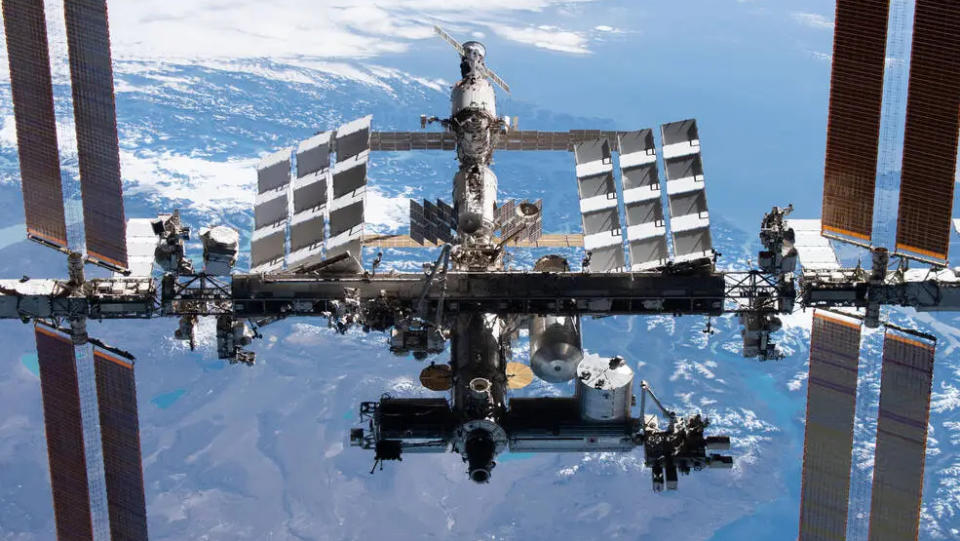ISS scientists make headway in cancer research: 'We're NASA, we do Moonshots'
When you buy through links on our articles, Future and its syndication partners may earn a commission.

"Why do we go to space?" asked NASA administrator Bill Nelson to a small crowd at NASA headquarters last week. "We go to explore the heavens, but we also go to improve life here on Earth, and that includes attacking this dreaded disease that we know is cancer."
Nelson was speaking at an event held in conjunction with the U.S. Department of Health and Human Services (HHS) to give an update on progress that the respective agencies are making toward the White House's Cancer Moonshot initiative, originally launched in 2016.
The program involves collaboration between NASA scientists, doctors and researchers, alongside the US federal government, all of whom aim to cut national cancer rates by at least 50% over the next 25 years. Stated on the White House website, "We're building a world where the word 'cancer' loses its power, a diagnosis isn’t a death sentence, we prevent cancer before it starts, we catch cancer early so people live longer and healthier lives, and patients and families don’t have to navigate their cancer journey alone."
This is an ambitious goal. Cancer is among the leading causes of death worldwide, with almost 20 million new cases and 9.7 million cancer-related deaths reported in 2022 alone, according to the National Cancer Institute (NCI) — and these numbers are only expected to rise.
Related: This Is How NASA's Trying to Find Better Cancer Treatments in Space (Video)
Compounding the issue is the fact that not all cancers are created equal — only a handful have well-vetted, early-detection protocols, not to mention treatment options and promising survival rates. Breast cancer, for example, has an almost 90% five year survival rate while lung cancer, liver cancer, colon and rectal cancer (the latter of which is currently on the rise in terms of diagnosis), have poorer outcomes.
NASA scientists are uniquely positioned to help explore how cancer cells develop, function, and respond to treatment, said Nelson. Testing tumors outside the body isn’t a new concept, but cells behave differently in space under microgravity. In this environment, cells become incredibly stressed, causing them to age more rapidly and, when cancerous, progress disease more quickly than on Earth.
"Cells grow differently," said Nelson. "Tumors develop differently. Tissues can form differently, […] and that means medicines can be tested differently."
Many experiments are conducted on the International Space Station (ISS), for that matter, which contains the world's most sophisticated microgravity laboratory. And some of those experiments are particularly focused on cancer research.
"Astronauts and teams on Earth perform groundbreaking research every day, and since November of 2000, we've had almost 4,000 different experiments representing more than 5,000 researchers from over 100 countries," stated Jenny Turner, a representative of the space station's research Integration Office at NASA Johnson Space Center, at the briefing.
In fact, exciting progress has recently been made in areas including protein crystallization , nanoparticle drug delivery, tissue engineering, and stem cell research. These discoveries have allowed scientists to test and create better drugs while also minimizing the need for animal testing.
Nelson also made note of a particular success involving a well-known anti-cancer drug named Keytruda made possible through a gamut of ISS-based discoveries. "It's one thing to develop a drug or therapeutic, but it's another to make sure that [it] is administered in the most effective way — to get it to reach a precise target in the body," he explained. "[We] were able to develop methods of protein crystal growth that made it possible to administer Keytruda [on Earth] in a new way, by an IV injection."
Keytruda previously required several hours to administer, which puts a burden on patients and healthcare systems. "But in developing the drug for an IV infusion, [it can now] be administered by a doctor in as little as 20 minutes," he said. In collaboration with the pharmaceutical company Merck, the team is now awaiting approval of the next step for Keytruda: a quick injection.
NASA scientists are also working to develop more sophisticated cancer cell detection methods, which are being incorporated into the astronaut health surveillance program to spot certain cancers earlier and make these measures more widely available.
Related Stories:
— How Space Science Is Helping Fight Against Cancer
— Cancer-Fighting Drug, Algae and Mice Headed to International Space Station on SpaceX Dragon
— The Apollo program continues to inspire 'moonshots' in the 21st century
"What we've learned in part through these focused topic areas and protein crystal growth, nanoparticle drug delivery, and stem cell research, is that these voyages of discovery are not only about humans looking outward to explore new worlds and new destinations outside of Earth, but real world improvements in our understanding of disease here on Earth,” said Michael Roberts, chief scientific officer of the International Space Station National Laboratory and vice president at the Center for the Advancement of Science in Space for cases, which manages the ISS National Lab.
"If beating cancer sounds great, if it sounds daring, if it sounds even impossible," added Nelson. "Just remember, we're NASA. We do moonshots."

